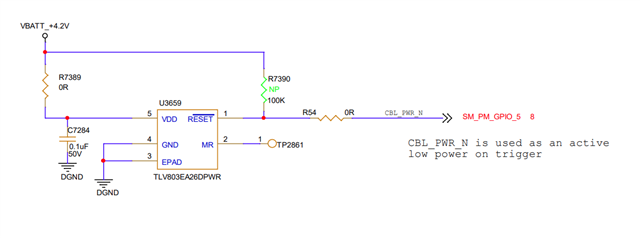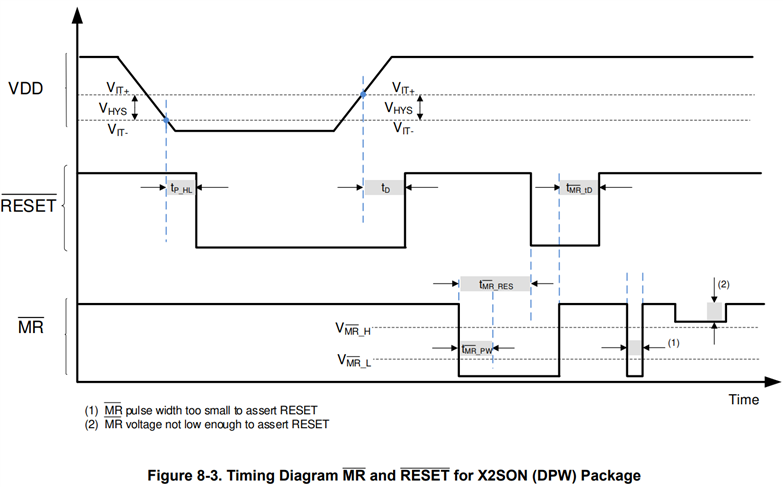Tool/software:
Hi Team,
I'm using the part TLV803EA26DPWR in my design where one low pulse is required when VDD is supplied in a single power cycle.
My system needs a Low pulse as a trigger to boot up.
While supplying the VBATT_+4.2V, the system will encounter the following sequence,
1.VDD < VPOR - undefined state of RESETn
2.VPOR < VDD < VIT- RESETn will stable Low signal
3.VDD ≥ VIT- RESETn will stable Low signal
4.VDD ≥ VIT+ - RESETn will stable High signal
In the datasheet, the table 8-1 fourth row whether the VDD condition (VDD ≥ VIT–) is a typo?
Also let me know the understanding on the above sequence.


